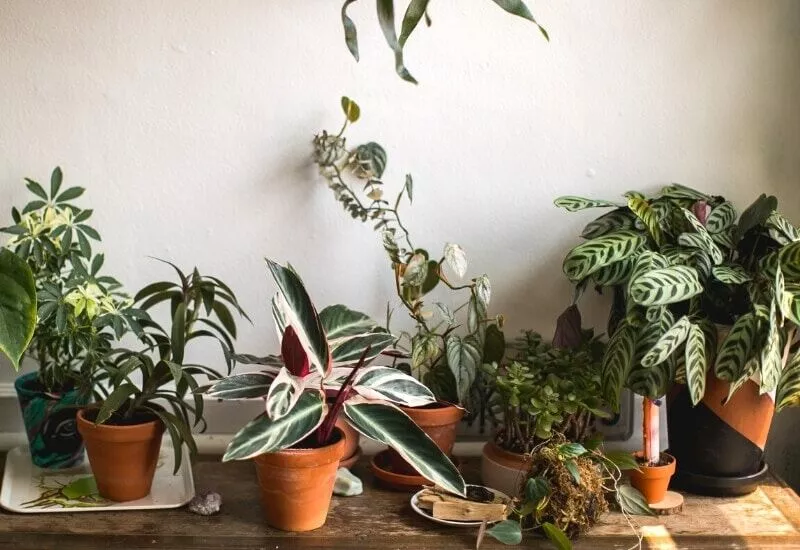
House Plants That Don’t Die Easily
Choosing house plants is not an easy task. You will need to keep up with watering them and remembering to do so. If you are forgetful, you might want to consider easy house plants that don’t die easily. They can survive with almost any type of green thumb. You can choose between Peace lily, Kalanchoes, Bromeliads and Pothos ivy. Read on for some great suggestions.
Pothos ivy
A pothos ivy plant is easy to care for. It requires medium light and humidity of 70 to 90 percent. It does not tolerate direct sunlight. Make sure that your pothos ivy plant does not sit in a draft. It also needs good air circulation and a moist, aerated growing medium. Water it only when the soil feels dry and fertilize it every couple of months. You can trim the stems to achieve the desired height and shape.
Pothos ivy requires little to no watering. Infrequent watering is enough. Make sure that you water thoroughly and don’t leave the soil for too long. It also doesn’t like sitting in water, so it’s best to place it in a bathroom or use a humidifier. This houseplant doesn’t require much light but will need moderate light for optimal growth.
Peace lily
If you’re looking for an easy-care plant, the peace lily may be the perfect choice. These plants are very easy to maintain and can grow in low light areas. They also produce glossy green leaves that add a pop of color to dark rooms. NASA has even discovered that they can help clean the air. This is why they are one of the best house plants for people who are pressed for time.
To propagate Peace lily, divide the plants into separate clumps. Peace lilies grow from rhizomes, and you can divide the plants by cutting off a section of one or two leaves. Make sure you preserve as many of the plant’s roots as possible. Once you have cut the crown of the parent plant, you can plant the new crown in a separate pot or container with two healthy leaves. After planting, you should not fertilize the peace lilies for at least three months to prevent burning the new crown.
Kalanchoes
Although kalanchoes are considered easy house plants that don’t die easily, there are a few things you should know about them before you plant them. They can tolerate dry, warm weather well, but they should not be kept in a sunny window. You can water your kalanchoes about once a week, although you may need to increase your watering schedule if you’re planning to bloom it. Kalanchoes can be propagated by stem cuttings or rooting cuttings. Make sure to water them well once or twice a year to keep them healthy.
There are many types of kalanchoes available, including the traditional upright variety, and the less common drooping version known as the widow’s thrill. The main reason to grow kalanchoes as houseplants is for their foliage, and there are many different varieties of kalanchoes available. The non-flowering variety is ideal for houseplants and is often sold in nursery pots. Other varieties are great for hanging baskets or containers. All types require a good amount of sunlight, including bright light, especially during winter months. If the windows are not facing south, then the filtered light will do.
Bromeliads
When it comes to care and maintenance, bromeliads are among the easiest to maintain house plants. They do not require submerging the roots, and you can simply keep gravel and water in a saucer. Bromeliads are trouble-free once they reach their maturity, but if you are concerned with pests, use neem oil to kill mealybugs and aphids. Scale insects and mealybugs can also be killed with rubbing alcohol and a cotton swab. During this time, bromeliads will slowly fade from color to brown.
A proper fertilizer is essential for bromeliads. You can use homemade or organic fertilizers for bromeliads. You can also use liquid houseplant fertilizer or compost tea. Do not use chemical fertilizers on your bromeliads, as these can harm them. However, if you are planning to grow air plants, you can use liquid fertilizer diluted to half strength. Bromeliads do not require pruning.
Aloes
The first thing you need to do to make an aloe plant thrive indoors is to choose the right potting mix. Make sure the mix has good drainage and that you leave about 3/4 inch of space at the rim of the pot. Once the pot is filled, set the aloe plant in the soil. Be sure to place it so that the bottom leaves rest above the soil. Do not water the plant after it is placed.
Aloes are easy house plants to care for and need minimal watering and fertilizing. They are also adorable! Watering an aloe plant only once a week is usually enough. It also doesn’t need much light to thrive. If you want to give your aloe plant some light, try placing it near a window. Aloes can tolerate a lot of heat and don’t need much water. In winter, it goes dormant and doesn’t require watering, but make sure you place it in gravel to avoid rot.
Prayer plant
If you want a houseplant that won’t die quickly, the Prayer Plant is a great choice. This versatile plant closes its leaves at night and opens them up during the day. It’s ideal for humid areas and well-drained soil. Prayer Plants need a humid, well-ventilated room to grow. They don’t like too much or too little water, so they need a moist environment.
When it comes to watering, it is important to avoid over or under-watering, since prayer plants prefer a high humidity level. Therefore, keep them away from radiators and other heat sources as they can dry out the air and stunt the plant’s growth. You can also use a humidifier, humidity tray, or the steam from a shower to provide humidity. It is important to repotted your prayer plant every two years.




